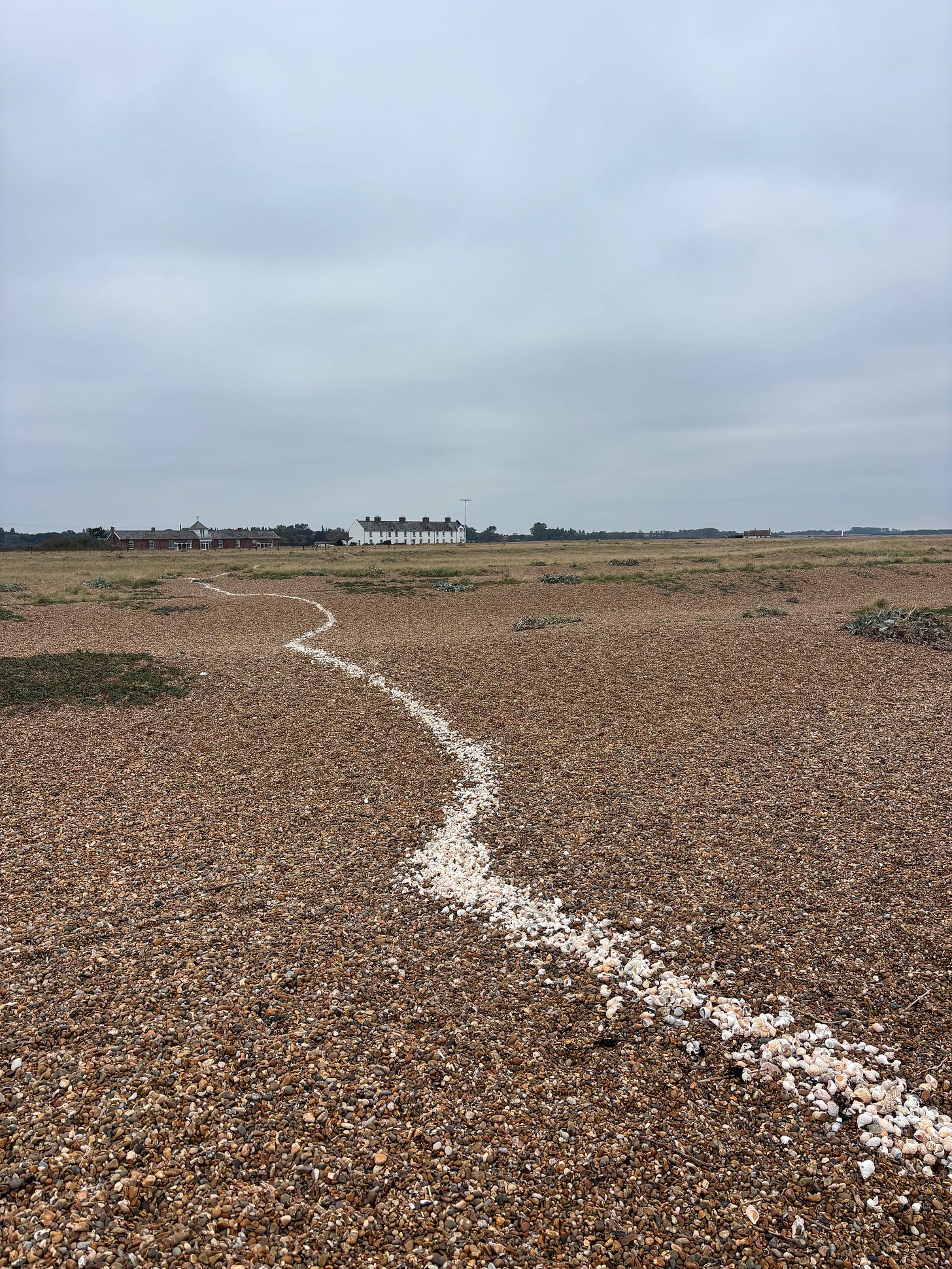Louis Unknown | October 16, 2025
The Shingle Street Line Edition
On seashells, recovery, Margaret Howell, and remote escapes.
Louis here. This past Sunday, I drove out to a remote settlement called Shingle Street, a small strip of weather-beaten homes on England’s North Sea-facing East Coast.
It’s notable for a few reasons. First, there’s a strange military history: The area was evacuated in 1940 by the Ministry of Defense, who feared that German forces were soon going to invade Britain from this exact location. (Ever since, local tales of battles on the beach and fires on the water have had to be ritually debunked.)
There’s also some real design history. After it was repopulated—about forty people live there now—the notable architect John Penn built a California-style bungalow in this most unlikely of locations. (The legendary British clothing designer Margaret Howell, who lives nearby and likes to walk the beach, fell so hard for the house that she befriended its owners.)
But perhaps the most striking thing you’ll find there is the Shingle Street Line.
Why is this interesting?
The Shingle Street Line is a long, single line of white seashells, that runs from the start of the rocky beach all the way up to where the water breaks.
Made up of over 20,000 individual whelk shells, it was started in 2005 by two friends, who had received terrifying breast cancer diagnoses within two months of each other.
Creating the line became a therapeutic practice for the two—they started small, but vowed to return every six months to maintain and enlarge it. Twenty years later, both are mercifully cancer-free, but they still go back to keep the project alive. At this point, the story has also moved many others, who like to visit on their own time and help keep the line intact as best they can, too.
Seeing it for the first time is breathtaking. Partly, because the place is so remote, you’ll likely be there entirely on your own, as I was. But also because it’s amazing to realize that this perfect, giant thing endures without any official oversight, and even as the tide comes in and out each day.
I’m not sure if there’s any massive insight to share here, all I can say is that I’d never have happened upon the line if I hadn’t decided to go and see the cold, gray beach that Margaret Howell, someone I really respect, likes to walk on. Happening upon a discovery like the line was an invigorating, satisfying reminder of the unexpected rewards that can come from following your own nose, and letting curiosity take you away from your routine. (LC)


